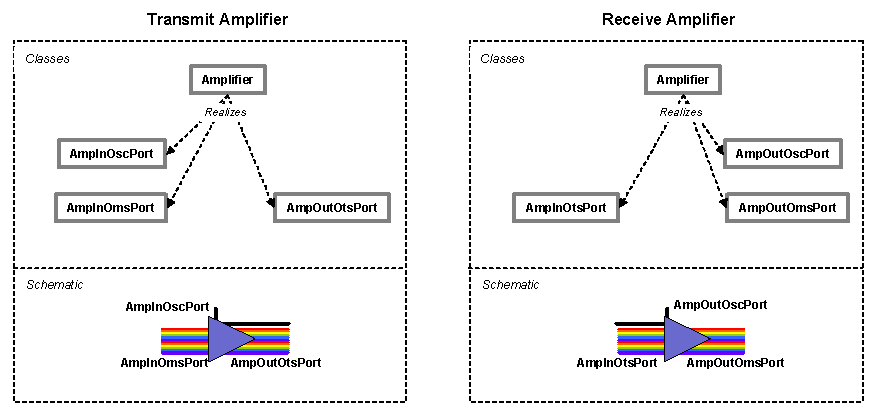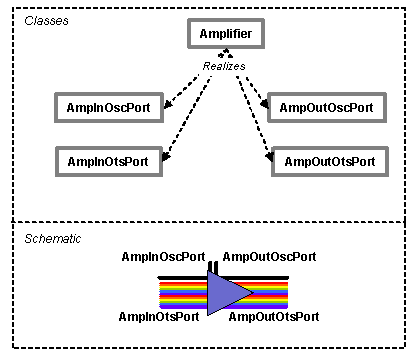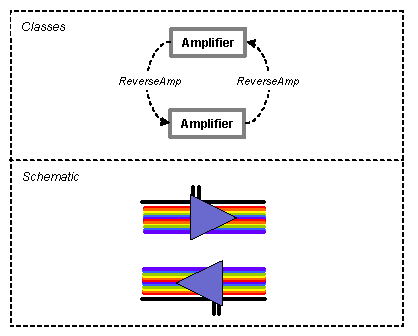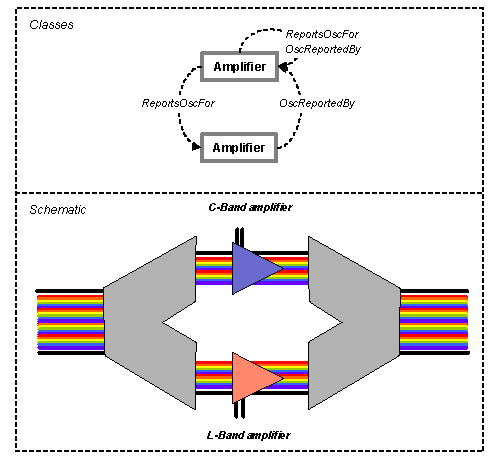There are three types of amplifier that are modeled in the Optical Transport Manager for WDM using the Amplifier class.
-
Transmit amplifier---Part of a transmit end terminal or back-to-back transponder
-
Receive amplifier---Part of a receive end terminal or back-to-back transponder
-
In-line amplifier---Used along Optical Transport Section (OTS) paths to boost the signal
The same class, Amplifier, is used to model each case. The difference between the configurations is the way the Optical Supervisory Channel (OSC) is split out and/or added in, which in turn determines which port type---Optical Multiplex Section (OMS) or OTS---forms the input and output. Different combinations of AmpInOmsPort, AmpOutOmsPort, AmpInOtsPort, AmpOutOtsPort, AmpInOscPort and AmpOutOscPort are used as required.
Classes and relationships for transmit and receive amplifiers shows the classes and relationships for transmit and receive amplifiers.
Figure 1. Classes and relationships for transmit and receive amplifiers 
Classes and relationships for a in-line amplifier shows the classes and relationships for an in-line amplifier.
Figure 2. Classes and relationships for a in-line amplifier 
The reverse amplifier relationship is used to identify peers of amplifiers that transmit in each direction. Classes and relationships for a reverse amplifier shows the classes and relationships for a reverse amplifier.
Figure 3. Classes and relationships for a reverse amplifier 
In-line amplifiers have additional, special relationships between them that are used during impact analysis of problems related to the OSC. These are illustrated in Amplifier relationships used for analysis of OSC problems.
Figure 4. Amplifier relationships used for analysis of OSC problems 